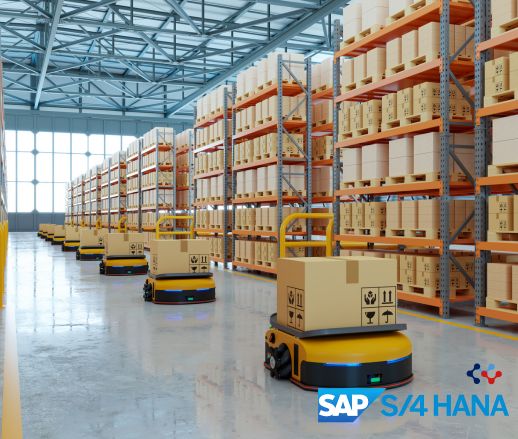
Warehousing has moved far beyond forklifts and spreadsheets. Today’s leading companies are embracing artificial intelligence (AI) and robotics, paired with SAP Extended Warehouse Management (EWM), to create intelligent, scalable supply chains. The combination is transforming warehouses from reactive cost centers into proactive engines of growth.
The Rise of AI and Robotics in SAP EWM
SAP has made robotics integration a cornerstone of its warehouse innovation strategy. In the 2023 S/4HANA EWM release, SAP introduced over 40 new features, many developed in response to customer requests. These include robotic APIs, automated yard management, and improved orchestration tools.
Academic studies also highlight the potential. A recent paper on reinforcement learning in warehouse orchestration within SAP Logistics Execution demonstrated 95% task optimization accuracy and 60% faster processing compared to manual approaches.
Meanwhile, SAP’s own integration guidelines stress that robotics must be treated as an extension of EWM, not a bolt-on. That means seamless coordination across inbound, outbound, picking, and returns.
Benefits of SAP EWM with AI Robotics
Throughput Gains
Warehouses adopting robotic picking and autonomous pallet transport within EWM report 20–30% improvements in order processing speed.Error Reduction
Robotics integrated directly into EWM workflows have reduced picking and inventory errors by up to 90%, driving customer satisfaction.Scalability
New sites, SKUs, or peak seasons can be scaled with robotic fleets rather than hiring temporary staff.Regulatory Compliance
AI-driven serialization and real-time traceability ensure industries like pharma and food remain audit-ready.
Challenges and How to Overcome Them
| Challenge | Mitigation |
|---|---|
| Synchronization of robotic fleets with EWM task queues | Use event-driven orchestration APIs and latency monitoring |
| Data quality from sensors and IoT | Implement redundancy, data cleansing, and fallback protocols |
| Workforce resistance to robotics | Role-based training, change management, and human-robot collaboration |
| High upfront cost | Phased deployment by warehouse zone, ROI modeling |
Case Applications
- Semi-Automated Picking Zones: Robots handle repetitive picking while humans manage exception handling.
- Hybrid Yards: Autonomous guided vehicles transport pallets while EWM orchestrates dock assignments.
- Cycle Counting: Drones integrated into EWM provide near real-time stock accuracy.
What now?
SAP EWM with AI robotics is a competitive differentiator. Organizations implementing it see not only cost savings but improved agility, resilience, and compliance. The message is clear: automation is no longer futuristic—it’s the new foundation of warehouse excellence.
Sources:
- SAP Community – Enhancing Warehouse Operations by Integrating Robotics with SAP EWM
🔗 https://community.sap.com/t5/supply-chain-management-blog-posts-by-sap/enhancing-warehouse-operations-by-integrating-robotics-with-sap-extended/ba-p/14129111 - SAP PRESS Blog – 14 Integration Capabilities with SAP EWM
🔗 https://blog.sap-press.com/14-integration-capabilities-with-sap-ewm - VESLOG – New Features of SAP EWM in S/4HANA 2023
🔗 https://veslog.com/blog/practical-insights-into-new-features-of-sap-ewm-in-s-4hana-2023 - arXiv – Reinforcement Learning for Autonomous Warehouse Orchestration in SAP Logistics Execution (2025)
🔗 https://arxiv.org/abs/2506.06523
